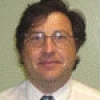(RxWiki News) Health supplements, faith healing, homeopathy, chiropractic care and acupuncture are all types of complementary and alternative medicine. How often do children use this kind of care?
A recent study looking at the numbers in Canada found that use of complementary and alternative medicine (CAM) was pretty high in general. In a western Canada hospital, it topped 70 percent. In a central Canada hospital, it was lower at 42 percent.
It's unclear how these numbers compare to use among children in the US, but the study's findings could apply to anyone using this type of care.
The study found that many parents are not telling their doctors about the CAM their children use. This could be dangerous if the doctors are unaware of possible drug interaction or other conflicts with standard treatment.
"Tell your doctor about complementary & alternative medicine use."
The study, led by Denise Adams, PhD, a pediatrician in the Faculty of Medicine and Dentistry at the University of Alberta in Canada, aimed to get a better sense of how often children used CAM.
The researchers gave questionnaires to parents in the waiting rooms of two different children's hospitals, one in Edmonton, Canada and one in Ottawa, Canada.
The parents' children, who were an average age of 8, were patients with chronic conditions who were visiting the cardiology, gastroenterology, neurology, oncology or respiratory clinics at the hospitals.
Among the 704 parents surveyed in Edmonton, 71 percent said they used CAM. Among the 222 parents surveyed in Ottawa, 42 percent said they used complementary and alternative medicine.
The most commonly used complementary medicine was the use of vitamins, which 85 percent of respondents said their children took. Another 16 percent used herbal products, and 12 percent used homeopathic medicine.
Among complementary and alternative practices, 39 percent said their children had used massage, and 27 percent had used faith healing. Twenty percent had used chiropractic care, 16 percent had used aromatherapy, and 16 percent had used relaxation.
Most of the parents saw both the products and practices their children used as helpful. A total of 84 percent of parents rated the CAM products as helpful or possibly helpful, and 76 percent rated the practices similarly.
The most commonly reported reason for choosing not to use CAM was that the parents didn't know enough about it, which 53 percent of the parents reported.
The second most common reason for not using it was that parents didn't think it was necessary, though 13 percent also reported being concerned about possible side effects from mixing it with other treatment.
Half the parents reported their children had received CAM simultaneously with regular medical care, and 56 percent reported their child used it at the same time as taking prescription drugs.
Most of those using CAM with prescription drugs (65 percent) said they did tell their doctor about it.
The majority of the respondents (about 80 percent) said they felt comfortable talking about CAM use in the clinic they were visiting. Also, 60 percent said they would like more information on it from the clinic – about the same amount who said they got most of their information on it from family.
The parents reported a total of 80 adverse events following the use of CAM, though 55 of these (69 percent) were considered minor by the parents.
The researchers concluded that CAM use is generally high among children, and the parents perceive the use as helpful with few or no harms related to it.
Although many parents talk to their doctors about using it, the researchers expressed concern that not enough of this communication was occurring.
"Many patients, using CAM alongside their conventional medicines, are still not discussing their CAM use with their physicians and are increasing the likelihood for potential interactions and preventable harms," the authors wrote.
"Concurrent use of CAM and prescription medications is widespread and poses a potential risk to patients who may be unaware of the potential for interactions," they added.
This concern was echoed by Thomas Seman, MD, a pediatrician at North Shore Pediatrics in Danvers, Mass. and a dailyRx expert.
"Many times unless directly questioned, the parent or child does not bring up these other means of their health care," Dr. Seman said. "It is very important to notify the physician of these alternative medicines/herbal or mineral since there may be side effects and or cross reactions between these medication/treatments and western medicines."
He noted that not communicating with doctors about complementary care can make it harder for a pediatrician to adequately address a child's medical issues.
"An important role of the primary care physician is to be the coordinator of care," Dr. Seman said. "Therefore, if the pediatrician is not aware of any other therapies being employed by the patient then should complications arise the physician may be at a loss on why the complication occurred or possibly even how to correct it."
He added that reproducible studies have shown that acupuncture works even though the exact mechanisms are not understood and that chiropractic care in children under age 18 is generally not recommended.
The researchers acknowledged that their survey results could have been skewed by including vitamins and minerals as a type of CAM, since not everyone agrees they should be classified as such.
They said they included them in the survey because Health Canada has classified them as "natural health products" and because they wanted to assess how many patients used them.
Yet vitamins and minerals only accounted for 10 percent of overall use of CAM in the survey, so their use does not appear to have inflated the numbers.
The study was published January 14 in the journal Pediatrics. The research was funded by the SickKids Foundation. One author receives salary support from Alberta Innovates, Health Solutions, and another is funded by the University of Ottawa.









